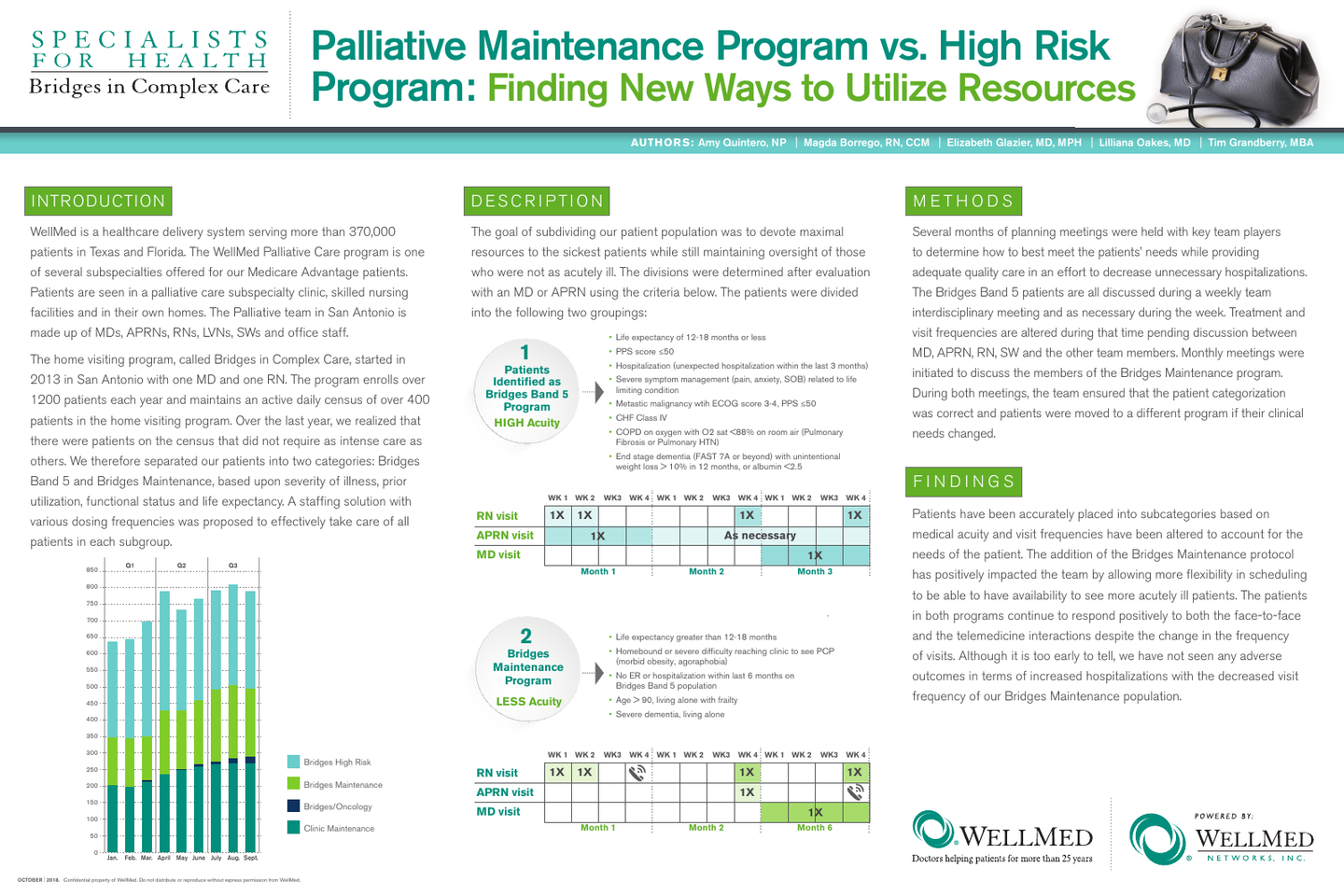Palliative Maintenance Program Versus High-Risk Program: Finding New Ways to Utilize Resources
Introduction
WellMed is a health care delivery system serving more than 300,000 patients in Texas and Florida. The WellMed Palliative Care Program is one of several subspecialty programs offered by WellMed. Patients are seen in the Primary Care Clinic office, Skilled Nursing Facility, and in their home. The Palliative team consists of 30 staff members in the San Antonio Market. It is comprised of 4 MDs, 4 NPS, 7 RNs, 2 LVNS, 2 Social Workers, and 9 Ancillary Staff Members.
The home visiting program, called Bridges in San Antonio , started in 2013 with staffing of one MD and one RN with 30 pts. In the past 5 years it has grown to over 400 patients and over 4, 000 patients since the program inception. In reviewing the patients and their complex medical needs it was determined that patients, although all met criteria to be in the program, around 50% of the current census in the home visiting program were higher utilizers of financial resources and time. While the remainder of the population required fewer resources. A staffing solution was proposed to effectively take care of all the patients with the present resources allocated for our program.
Description
Presently the Palliative care program has 400 pts in the home visiting program called Bridges and 250 patients in the clinic. Due to the complexity and needs of the program, the need to devote staffing resources to the most complex patients was of top priority. After meeting with key members of the team to include administrator, RN, NP, MD, and scheduler, a staffing model was established to meet the needs of the expanding program. Patients were identified as being high-risk if they had frequent hospitalizations or skilled nursing facility stays, were diagnosed with new or recurrent cancer, any uncontrolled symptom or poor social support, and complex medical needs. Staffing schedules were started for these patients to offer increased nursing support. For the lower acuity patients a staffing schedule was initiated that decreased the nurses , APRN, and MD face to face visitation with patient and relied on use of telehealth and phone calls to communicate with the patient.
Methods
Several months of planning and meetings were held with key players of the team to determine how best to meet patient needs, to provide quality care, decrease loss of revenue and to make sure each patient was adequately cared for. Weekly meetings were set up to discuss high-risk patients, and monthly meetings were arranged to discuss maintenance patients.
Findings
In this poster we will show how the staff dosing for appointments can be arranged for high-risk and maintenance pts. We will explore how use of telephone calls called “Step Calls” and telehealth visits decrease the work load of the providers, allocating more resources for the high-risk patients.
Author
Amy Quintero
Nurse Practitioner
WEllMed Medical Management
7622 Louis Pasteur
San Antonio, TX, 78254
